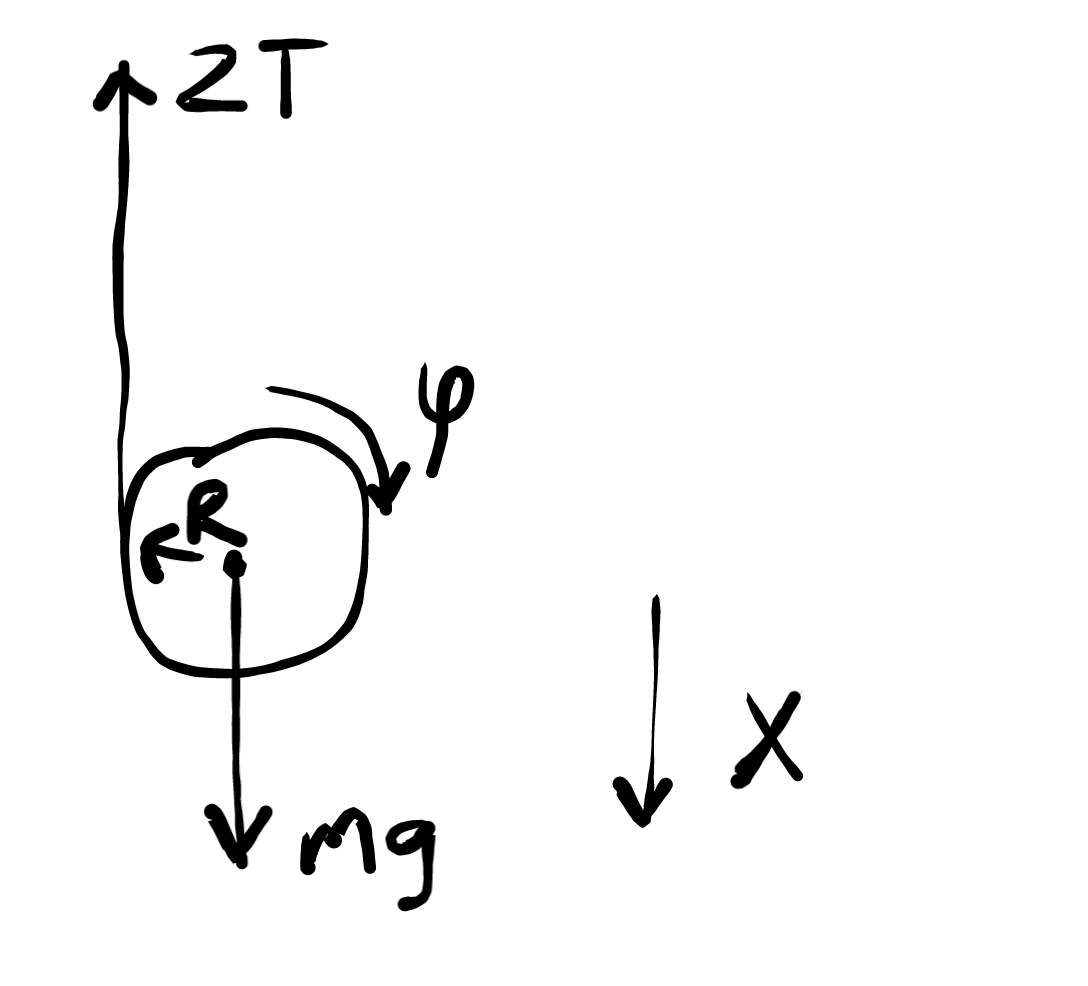Find the speed of the cylinder as it falls through a distance h?
A cylinder of mass m is suspended through two strings wrapped around it as shown in fig.
Find the speed of the cylinder as it falls through a distance h.

A cylinder of mass m is suspended through two strings wrapped around it as shown in fig.
Find the speed of the cylinder as it falls through a distance h.

1 Answer
Explanation:

This is idealised, eg assumes that the strings remain in the vertical position.
But this does serve as a FBD. With
- Newton's 2nd law in the
#x# direction:
- Newton's analogous 2nd law for rotation: ie Taking moments/looking at torques about the centre of the cylinder:
For the cylinder:
It follows from
Plugging this into
Finally, from
For the next part, assuming you mean final velocity having fallen from rest through a height
So here:

